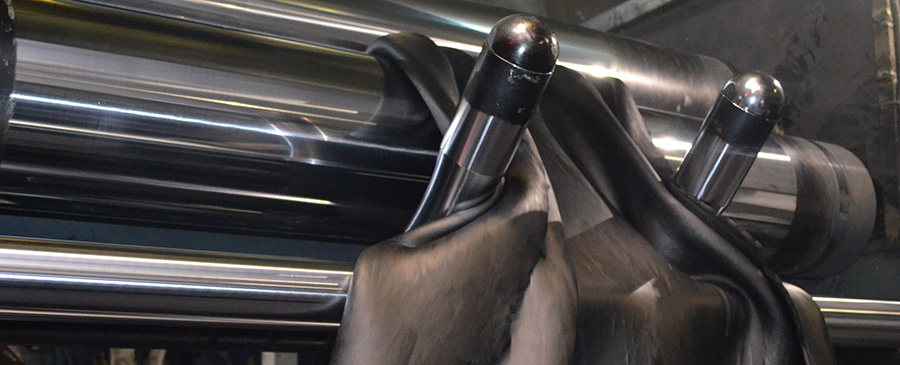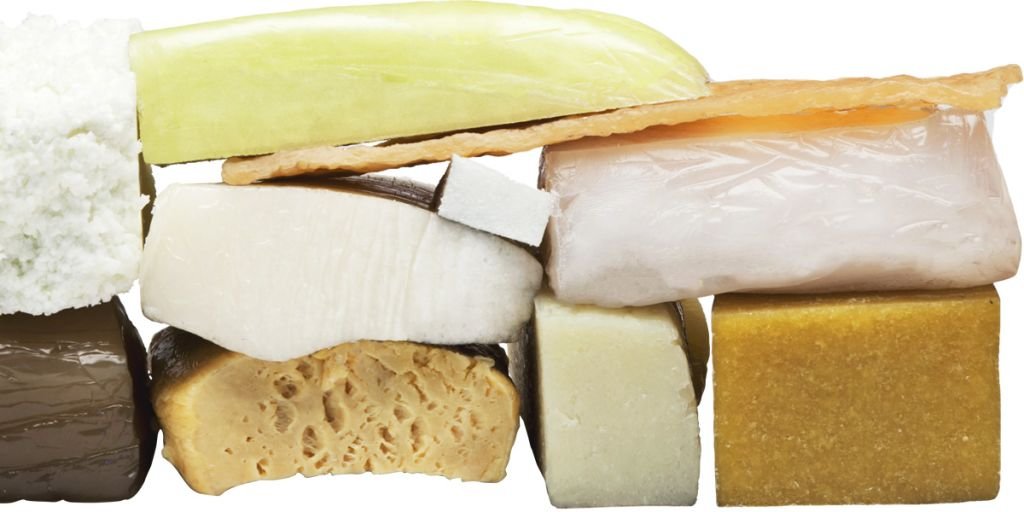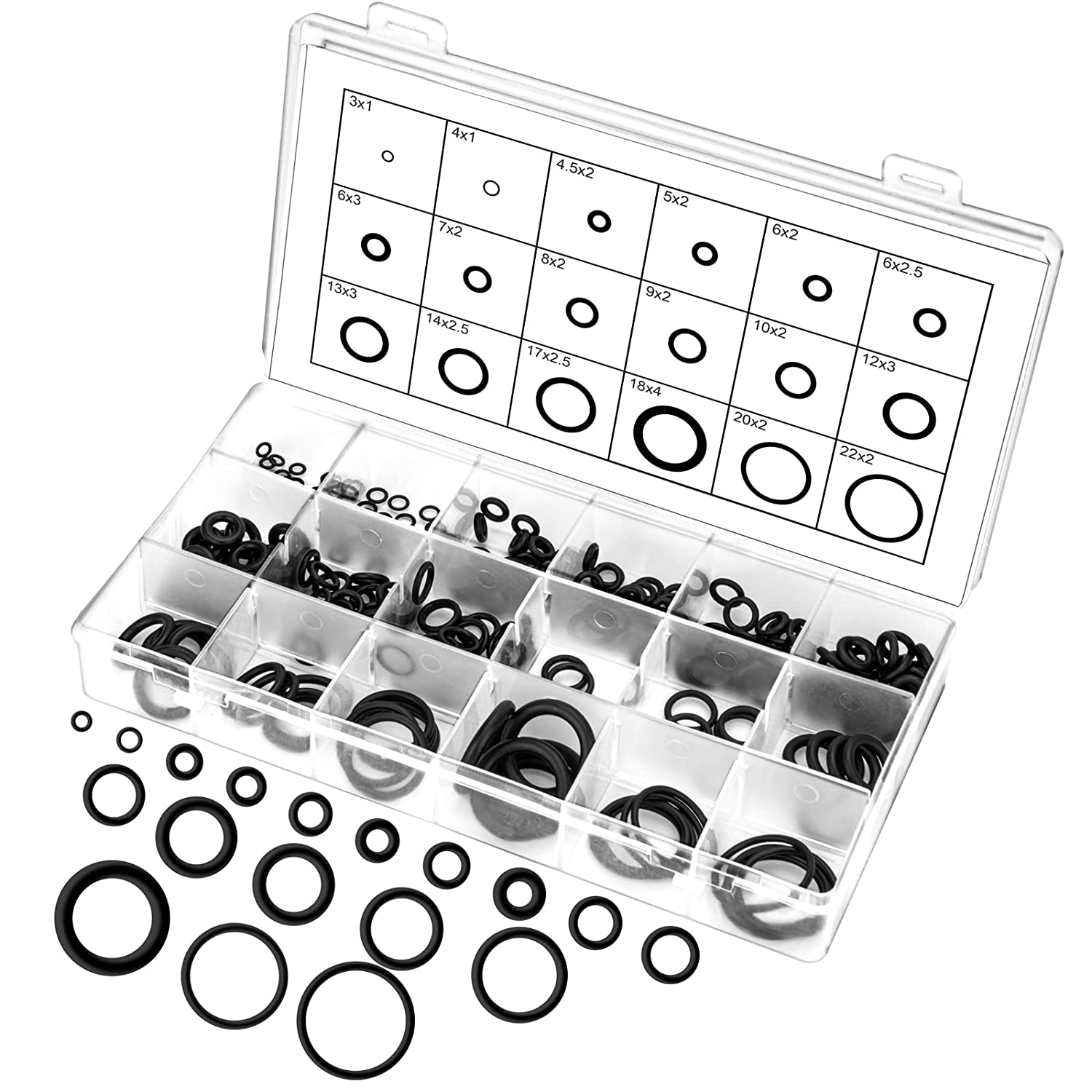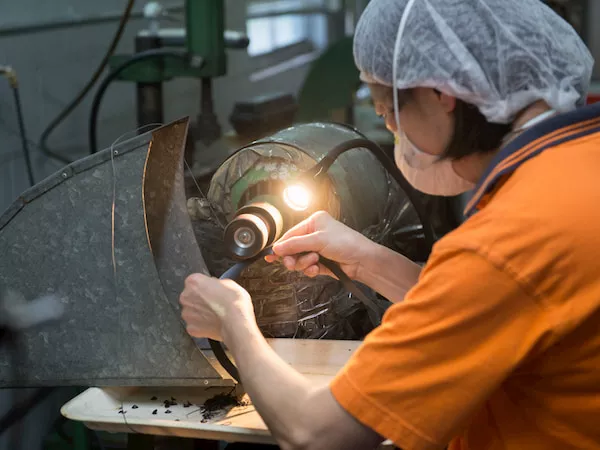What is Nitrile?
Nitrile is also called Buna-N or nitrile butadiene rubber (NBR). This is because nitrile is a synthetic rubber elastomer formed by compounding butadiene and acrylonitrile. Moreover, Nitrile O-rings, seals, and other products are readily used in static and dynamic applications.
On top of it, manufacturers also alter nitrile’s properties by further compounding it with other elements. As a result, they expanded the horizon for its application since the alteration led to customizable properties.

For instance, different nitrile products on the market have varying amounts of acrylonitrile. This ranges from 15% to 50%. The greater the amount, the better the oil resistance, and vice versa.
Similarly, more nitrile content in the product also means lower flexibility and vice versa. As a result, manufacturers can reduce or increase the oil resistance and flexibility of the polymer based on customer demand.
Properties Of Nitrile Rubber
Acrylonitrile Butadiene rubber has various stand-out properties, which make it one of the most popular synthetic rubbers in the industry. For instance, the material is most known for its incredible oil resistance. On top of that, nitrile performs pretty good and high and low-temperature conditions as long as they fall within the range.
Additionally, we have already discussed how manufacturers can alter nitrile’s oil resistance and flexibility by increasing or decreasing acrylonitrile content in the polymer. You must also know that excellent oil resistance helps it avoid swelling and makes the compound less permeable to gases.

As for temperature range, nitrile can perform exceptionally well within -40 to 230 degrees Fahrenheit. Moreover, nitrile has incredible puncture resistance, meaning it does not let other materials cause tears or abrasions quickly. On top of it, the material also shows resistance to aliphatic hydrocarbons, which further increases application opportunities.
However, nitrile isn’t as good an outdoor material as natural rubber or silicone rubber. The rubber performs poorly in sunlight, bad weather, and exposure to ozone. On top of it, nitrile also cannot withstand chlorinated hydrocarbons and solvents.
Send Your Inquiry Now!
Quality Meets Affordability. Inquire Now for High-Quality Products at Low Volumes.
Types of Nitrile Rubber
In its raw form, Nitrile has different properties than its compounds. Moreover, commercial nitrile is popularly used in two different versions: carboxylated nitrile (XNBR) and hydrogenated nitrile (HNBR). Both are compounds of rubber and we will look at each separately:

Carboxylated Nitrile (XNBR)
This is an enhanced version of regular nitrile. It contains acrylonitrile, butadiene, and acrylic acid. As a result, it opens ways for cross-linking, allowing vulcanization with sulfur. Hence, manufacturers use this to enhance the properties of nitrile and sell it as a compound version under the name XNBR.
Hydrogenated Nitrile Butadiene Rubber (HNBR)
Hydrogenated Nitril is another version of nitrile that offers incredible strength and excellent resistance to oil. As a result, the introduced hydrogenation turns regular nitrile into a more robust, resistant, and long-lasting material.
This leads to better ozone resistance and increased resistance to a wide range of chemicals. On top of it, it increases nitrile products’ overall durability and life.
Nitrile: Uses and Applications
Nitrile undoubtedly has various uses in a wide range of industries. So many products we use regularly use nitrile products in one form or the other. Let’s have a look at how specific industries make use of nitrile and its exceptional physical properties:
- Automotive Industry: probably the industry that uses most of this material. Everyday nitrile products include belts, gaskets, hoses, O-rings, etc. Moreover, nitrile also plays a vital role as a sealant in vehicle fuel systems.

- Military: as discussed earlier, nitrile is used in automotive self-sealing fuel tanks. This also includes military-grade vehicles as well as marine fuel systems. As a result, you can imagine the quality of physical properties nitrile offers.
- Sealant: nitrile offers superior oil resistance than natural rubber. As a result, it is readily used as an alternative to natural rubber to produce O-ring oil seals for various industries.
- Medical: nitrile also handles acids and oils better than many synthetic rubbers. As a result, the material is perfect for many disposable lab equipment products. On top of that, nitrile does not cause an allergic reaction to the skin. As a result, disposable non-latex gloves/nitrile gloves make a great alternative to latex gloves.
Send Your Inquiry Now!
Quality Meets Affordability. Inquire Now for High-Quality Products at Low Volumes.
Nitrile: Benefits and Advantages
You must be wondering the reason behind nitrile’s popularity. The material has specific benefits and advantages, making it a better option than other synthetic rubbers. Some of the vital nitrile benefits include:

- Chemical Resistance: one of the reasons why the automotive and aeronautical industry uses nitrile so much is its chemical resistance. As mentioned, nitrile stands its ground when it comes in contact with chemicals such as silicone greases, alcohols, petroleum-based oils/fuels, etc.
- Temperature Resistance: even though nitrile can withstand a reasonably decent temperature range, its most stand-out feature includes excellent performance in low temperatures. As a result, you can expect nitrile to retain its properties, including flexibility in low-temperature conditions.
- Strength: nitrile also has high tensile strength, making it suitable for heavy load and pressure applications. On top of it, the low compression set complements this by further allowing the material to withstand pressure.
- High Abrasion Resistance: nitrile handles general cuts, tears, and abrasions exceptionally. As a result, it is readily used as an alternative to natural rubber and other materials in static and dynamic applications.
Nitrile: Limitations
So far, we have discussed Nitrile’s properties, uses, and benefits. However, despite being such an incredible elastomer, nitrile does have some limitations. These include:

- Poor resistance to ozone. As a result, nitrile is not suitable for many outdoor applications.
- You will also come across compounded nitrile with SBR. This reduces the costs for the manufacturer. However, for the customers, it produces poor-quality rubber with reduced properties. The issue arises when it’s difficult for customers to differentiate between the two.
- Another common nitrile compounding involves phthalate, which significantly impacts the rubber properties of the material. If you want to know about phthalate-free O-ring and gasket materials, click here.
Send Your Inquiry Now!
Quality Meets Affordability. Inquire Now for High-Quality Products at Low Volumes.
Interested in Nitrile Rubber Gaskets, Grommets, and Other Parts?
Have some questions? We know what’s going on in your head. Everyone is skeptical about a new rubber material when they initially learn about it. But worry not. We have listed the most common questions people ask about nitrile.
What is the difference between nitrile and rubber?
Rubber, as in natural rubber, occurs naturally. On the other hand, nitrile is a compound made in a lab. Moreover, nitrile performs better than rubber in terms of oil resistance. Also, nitrile has better tensile strength and abrasion resistance. As a result, it is an excellent alternative to rubber.
Is nitrile rubber safe?
Nitrile is a harmless synthetic rubber. The toxicity report of nitrile tells that the material has no toxins. Even when nitrile breaks and dissolves, it does not release any toxins. Moreover, nitrile does not cause any allergic reactions to human skin either. This is why it is famously used to produce nitrile rubber gloves.
How strong is nitrile rubber?
The strength of nitrile depends on the compounding percentages. However, the shore hardness for nitrile generally ranges from 45 to 95. On top of it, nitrile has a low compression set, excellent abrasion resistance, and commendable tensile strength. Moreover, the rubber also performs exceptionally well regarding flexibility, so it can flex to as much as 300-500% of its original length.
Is nitrile rubber hard rubber?
The flexibility and hardness of nitrile depend on the acrylonitrile content in the compound. However, nitrile is generally a more complicated and stronger rubber than regular rubber. But remember that this hardness and strength come at the cost of low flexibility.
Send Your Inquiry Now!
Quality Meets Affordability. Inquire Now for High-Quality Products at Low Volumes.
Conclusion
To conclude, nitrile is backed by excellent mechanical properties and benefits for great use in various industries. It works incredibly well for indoor applications which require oil-resistant material. However, the only area it lacks is when it comes to outdoor applications. Nitrile and nitrile compounds have made many rubber applications easier and better.
Contact Hongju for the Most Premium Nitrile Products
At Hongju, we make sure to educate the customer before selling. This helps them understand their needs better. As a result, you can talk to our experts and discuss your needs with them. Once done, you will know what product and material are right for you.
